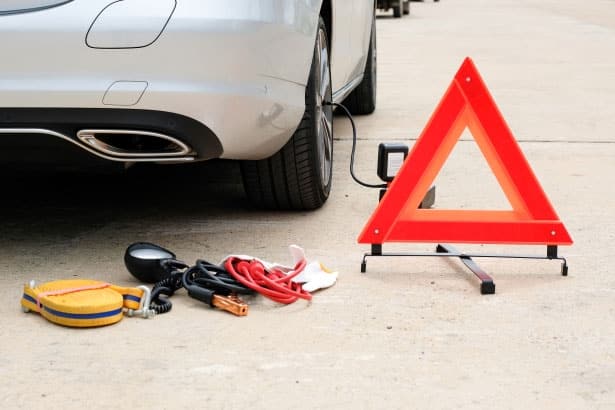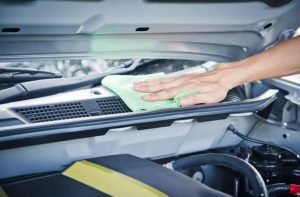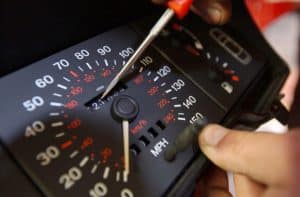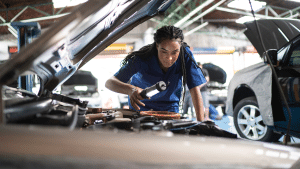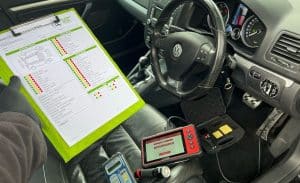Every car should have basics in case of a breakdown and every driver should know how to use those basics. Whether the culprit is a flat tire, a dead battery, inclement weather, or a collision, your car is bound to break down at some point. Even if you pay for roadside assistance service, having the right emergency items in your trunk will enable you to fix the problem yourself or ensure you are properly prepared and protected while you wait for help to arrive.
Here are must-have things to have in your car in case of emergency:
1. Spare Tire
Check your vehicle to ensure you have a replacement tire and don’t forget to use your tire gauge to check the pressure of your spare tire, so it’s safe and ready to use when you need it.
A nice gizmo to get is a canned tire inflator, which will quickly seal a flat tire and inflate it. Note that it provides only a temporary solution to your problem, affording you enough time to drive at low speed to a shop to get your tire repaired.
Tyre changing tools: If you are carrying a spare tyre, it’s also handy to carry a tyre lever, wrench, and car jack, all needed for changing a wheel.
2. Tyre Gauge
This little tool allows you to check the pressure in your tyres, ensuring your vehicle will withstand all terrains. If you are into four-wheel-driving, a tyre gauge is an absolute necessity when letting down and refilling your tyres for rugged terrain conditions. Tyre pressure gauges at service stations can be inaccurate, so we recommend you carry your own with you.
Top tip: Don’t try to check the pressure when tyres are cold.
3. Jumper Cables
One of the most common reasons you might be stranded is that your battery has died. Be sure to have a good set of jumper cables on hand so that another motorist can help you get your car started. And don’t cheap out on bargain bin jumper cables because you may find they don’t work when you need them the most. Get a good, heavy-duty set of jumper cables with thick gauge wires. You should try to find longer jumper cables when possible to make it easier to get your battery connected to another vehicle.
4. First Aid Kit
If you’re in a small accident or get injured on the road, a first-aid kit can make a big difference. But what should it contain – that is the question. For starters, bandages, gauze, adhesive tape, antiseptic spray, antibiotic ointment, over-the-counter pain medicine, and cotton swabs. Adding a thermometer to the kit would be a good idea, as well as tweezers and scissors.
5. Flashlight
Nighttime emergencies can be especially anxiety-inducing, especially if you have to open up the hood. Invest in a heavy-duty flashlight that is waterproof, and make sure you have extra batteries on hand.
Even better, consider getting a hand-crank flashlight that doesn’t require batteries. Another option is a lantern or headlamp, which will free up a hand and afford you 360 degrees of light.
6. Warm Blanket and Clothes
When you consider what to keep in your car for emergencies, don’t forget warm clothing. If you’re in an accident or your car breaks down in winter or in the mountains, having a warm blanket, gloves, socks, and sweatshirts on hand can help you and your passengers survive cold temperatures.
Imagine a scenario where a passenger or the driver is in shock after a collision. A blanket, in particular, can literally be a lifesaver and help provide not only warmth but also a sense of comfort to anyone under duress.
7. Portable Fire Extinguisher
In the case of a severe collision, cars are prone to catch on fire. This is why a fire extinguisher should be a fundamental car emergency tool for all drivers.
Fire extinguishers receive a rating from the National Fire Protection Association based on the types of fires they can put out. Class A fires involve substances like wood and paper and don’t typically occur in cars. Class B extinguishers are intended for fires caused by liquids like gasoline, diesel fuel, and kerosene. Class C extinguishers are for fires stemming from electrical equipment and panel boxes.
The best place to store your fire extinguisher is to have it mounted on the floor, just in front of the front passenger seat.
8. Snacks and Water
You might not think of snacks as a car emergency tool, but having them on hand can do wonders for the spirit, making an unpleasant situation more tolerable. If you’re stranded in a remote area, snacks can give you the fuel you need to survive. Keep food that doesn’t require refrigeration, like granola bars, dried fruit, crackers, nuts, and seeds.
9. Emergency Flares, Beacons, and Triangles
If your car becomes stranded, whether on a rural road or by a busy intersection, drivers may have difficulty spotting you. Letting off flares and placing battery-powered beacons around your car can give unsuspecting drivers advance warning, so they use appropriate caution and don’t compromise your safety.
Also, consider investing in reflective triangles. In case of emergency, place them on the side of the road, about 50 feet away from your car, where they can be easily seen. Keep at least three warning triangles in your vehicle.
Prepare Today For a Safe Trip Tomorrow. It is best to always be prepared for the worst-case scenarios. Ensuring you have all the items on this list in your car at all times will go a long way toward minimizing the negative impact of your breakdown experience.
Auto King Mobile Mechanic can come to you for any vehicle service, repair, and inspection needs. Send an SMS or Call us for a free quote!
